Objective of the cartographic survey
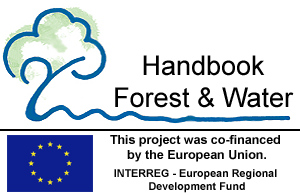
The research carried out within the framework of the INTERREG project "aquatic ecology issues in forestry" relates to watercourses in forests. This includes:
- Rivers, streams and small streams. Those water networks which drain public forests, also streams without a constant discharge, irrespective of their size and flow rate. In mountainous regions (Runtz, Talweg etc) which feature many very small steams and rills, descriptions are limited to the main channel. Streams which don’t feature on the IGN 1/25,000 maps were not included in the observations. From the outset ditches, canals and other artificial water systems were not considered. The survey of the physical qualities of rivers was carried out by the water agency in the Rhein-Mass catchment.
- Wetlands: the total water influenced areas (defined according to soil moisture and the potential occurrence of wetland plants), natural or artificial springs (e.g. Tarns) with a minimum size of 100 m². Lakes and weirs were not included in the cartographic survey. "Wetlands of special value" ("zones humides remarquables"; described in the "inventaires départementaux des zones humides remarquables") were also not the focus of the research.
Water courses and wetlands outside of public forests were not cartographically surveyed. Exceptions were wetlands and rivers on the edge of forests which were partly or completely within the public forest area.
A certain completeness was strived for in the research; all relevant wetlands and streams without special qualitative or quantitative differentiating factors were to be included. However, because of the size of the research area and the number of researched objects, several watercourse areas couldn’t be included. This information should be captured at a later time.
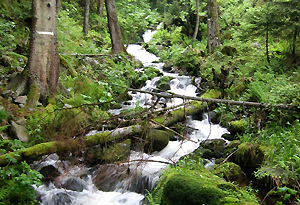
Fig. 1: River in the forest: The Petite Fecht in the crystal Vosges.
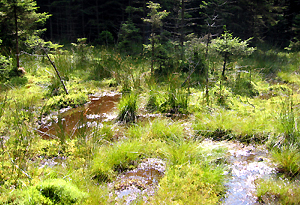
Fig. 2: Wetland in the forest: Upland moor. (Photos: ONF)
Research area
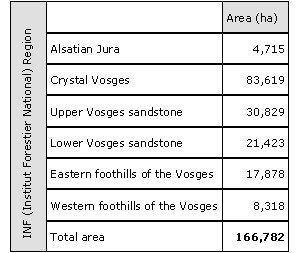
Tab. 1: The six natural landscapes in the research area.
The research site covered an area of 1,666,000 ha and included public Alsatian forests in the foothills of the Vosges and Alsatian Jura mountain ranges. The geomorphology structure is variable with six different natural landscapes (see Table 1 and Figure 3).
Approach and personnel
The field work took place between June 2006 and June 2007. The descriptions were carried out at the district level by the district leader. 196 forestry districts covering 305 communities were included. Around 200 workers carried out the survey over approximately 996 days (average 5 days per forest district). 285,131€ was estimated for preparation, project management and carrying out of the survey. (54% of the total amount spent on the French part of the INTERREG-Project).
Method to describe wetlands
The methods applied are partly based on the French method "Tronc commun", developed by the "Institut français de l’environnement" (IFEN) (Statistical department of the French Environment Ministry). It deals with a functional description and not a real mapping of habitats.
Method to describe watercourses
The method applied follows the "Estruka-Method” developed by the Forest Research Institute in Freiburg (FVA). Both methods consider to a great extent the effects of forest management and use and their resulting impacts.
Objective and value of mapping rivers and wetlands in forests
Surveying water courses and wetlands in forests is a key instrument in implementing the four main goals of the INTERREG-Project partnership.
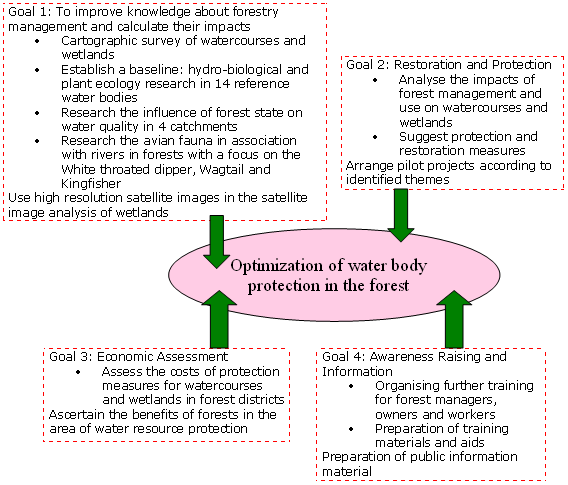
Fig. 4: The four main goals of the INTERREG-Project.
Constituent parts of the project
| Measure | Survey of rivers and wetlands |
| Where? | In public forests of the Vosges and the Alsatian Jura ranges |
| Who? | ONF |
The survey of watercourses and wetlands served to improve the knowledge of existing watercourses and wetlands within the research area. This appraisal enabled:
- The creation of a GIS-data base relating to watercourse structure in forests as an on-going information base for managers to improve their knowledge about watercourses in their respective forests
- the condition of watercourses and wetlands to be established
- the identification of the negative impacts of forest management on these areas. Consequently "priority areas", where measures need to be carried out, can be determined.
Watercourse Survey
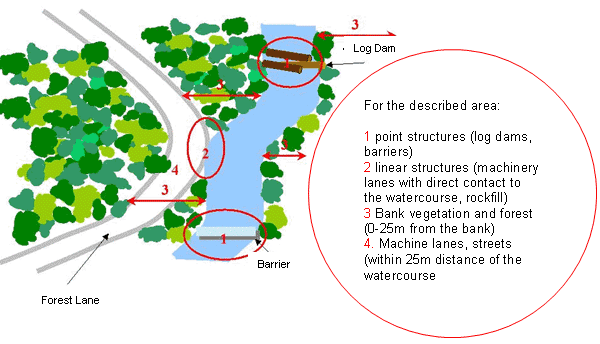
Fig. 5: Described objects.
- Before carrying out the survey, a regional evaluation of other applicable methods was performed: QUALPY ®- the method of the Agence de l’Eau Rhin-Meuse, the method of the Baden- Württemberg water working group (LAWA) and the Estruka-Method of the FVA. The latter was finally chosen. The measurement protocol suited the specific context of watercourses in forests. It is based on structure mapping (recognising constructed river crossings and natural obstacles) and recognised the special needs of different watercourses.
Principles of the Method:
The field worker determines on site:
- Obstacles and structures which hinder the passabaility of a watercourse:
- natural obstacles (log dams, drops, fallen trees etc, see Fig. 6)
- artificial obstacles (River crossings, steps etc see Fig 7)
- Linear and point objects in the river bed or in contact with the bank (rockwalls, streamside paths etc.)
- Tree condition (25m on either side of the river) in relation to a real riparian forest
- Damage/adverse impacts caused by forestry activities (machine crossings, timber storage, forest slash) or other activities (hunting, settlements).
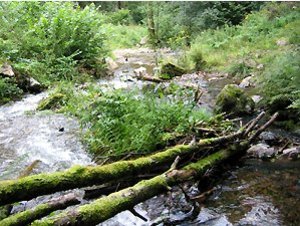
Fig. 6: Natural barrier: Deadwood.
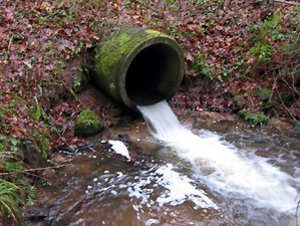
Fig. 7: Artificial barrier: Pipe culvert. (Photos: ONF)
Wetland Survey
This resulted in an almost complete survey of the wetlands in public forests. The condition report covers "normal" wetlands of all sizes with typical fauna.
- Development of a reference method and a pragmatic description (following the IFEN’s French national method "tronc commun")
- Structural description of wetlands (location, surface, type, forestry induced disturbances, function etc)
- Inventory and classification of adverse impacts that accompany forest management
The watercourse and wetland condition report increased knowledge about the distribution of these areas in forests.
It also allowed problems in these areas caused by forestry to be recognised and prioritised. Management guidelines can be suited to local conditions and specific measures introduced.

Fig. 8: An example of how the connections between wetlands and river networks are described.
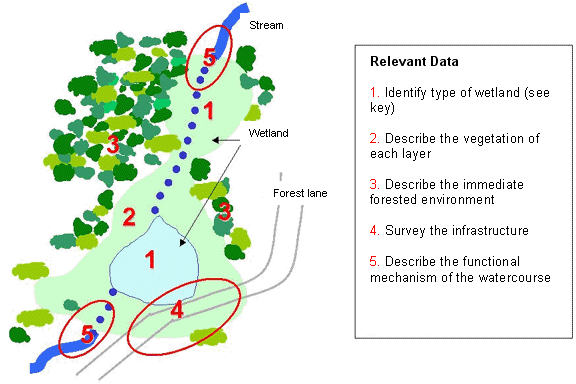
Fig. 9: Relevant Data
Potential of satellite image analysis of wetlands
Parallel to the onsite condition survey, an appraisal of high resolution satellite images (QuickBird) as a potential wetland aid was carried out. This related to two areas of 60 km² in the Vosges mountain range.
This process demonstrates the limits of satellite image analysis mapping aids in small areas within a forested area.
In both areas, the data collected on site was compared with the automatically calculated data from the satellite images (near-infrared).

